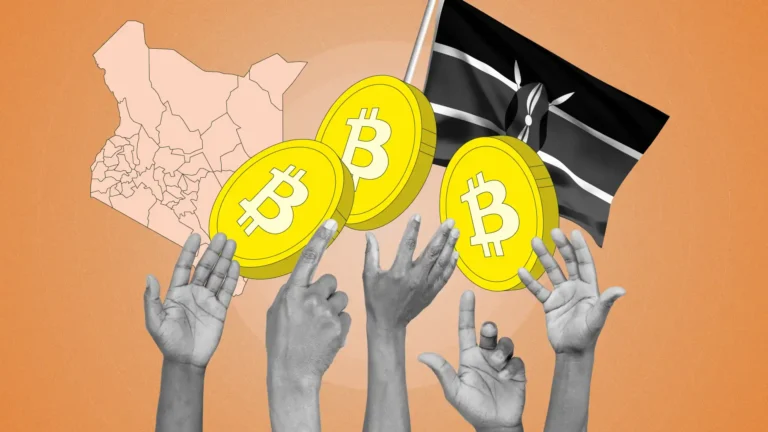For over a decade, Bitcoin has stood as the unshakable symbol of crypto — a revolutionary digital asset born from the ashes of the 2008 financial crisis. To its staunch supporters, Bitcoin is not just another cryptocurrency; it’s the future of money — pure, decentralized, incorruptible. These believers, often dubbed Bitcoin Maximalists, argue that all …
Bitcoin Maximalism vs. Multi-Chain Reality: Who Wins the Future?

For over a decade, Bitcoin has stood as the unshakable symbol of crypto — a revolutionary digital asset born from the ashes of the 2008 financial crisis. To its staunch supporters, Bitcoin is not just another cryptocurrency; it’s the future of money — pure, decentralized, incorruptible. These believers, often dubbed Bitcoin Maximalists, argue that all other coins are mere distractions or “altcoin experiments” destined to fail.
Yet, as the blockchain ecosystem expands with Ethereum’s smart contracts, DeFi protocols, NFTs, Web3 applications, and AI-driven innovations, a different vision of the future is emerging — one where multiple blockchains coexist and collaborate.
So, which vision wins out? Is Bitcoin destined to remain the one true chain, or are we entering a multi-chain era that Bitcoin must learn to share?
The Bitcoin Maximalist Perspective: One Chain to Rule Them All
Bitcoin Maximalists see the world in clear terms:
There is Bitcoin, and then there’s everything else — what they often call “noise.”
Their argument rests on several key beliefs:
- Monetary Purity:
Bitcoin’s scarcity — capped at 21 million coins — and decentralized consensus mechanism make it the soundest money ever created. No other network matches its integrity or immutability. - Security and Decentralization:
Bitcoin’s proof-of-work system and global mining network make it the most secure blockchain on Earth. No competitor has approached its level of decentralization or resistance to attack. - Simplicity as Strength:
Unlike Ethereum or Solana, which constantly evolve and take on complexity through smart contracts, Bitcoin’s design philosophy favors minimalism and stability. Maximalists believe this conservatism is a feature, not a flaw — preventing the risks that come with constant protocol changes. - “Everything Will Eventually Settle on Bitcoin”:
Many Maximalists predict that in the long run, Bitcoin will serve as the base layer for all digital value, with other tokens and sidechains merely acting as extensions or scaling tools that ultimately rely on Bitcoin’s security.
To Maximalists, Bitcoin isn’t just money — it’s a movement. It’s about sovereignty, freedom from central banks, and financial truth in a world filled with manipulation.
But this ideological purity faces a reality check in today’s rapidly evolving crypto ecosystem.
The Rise of the Multi-Chain Reality
While Bitcoin was the first, it’s no longer the only player in town. Over the years, new blockchains have introduced functionality and flexibility that Bitcoin’s base layer was never designed for.
Here’s what’s driving the multi-chain revolution:
- Smart Contracts and Programmability:
Ethereum, launched in 2015, expanded blockchain’s role from a store of value to a platform for innovation. Smart contracts enabled decentralized finance (DeFi), NFTs, DAOs, and more — things Bitcoin’s base layer simply couldn’t handle natively. - Scalability and Speed:
Networks like Solana, Avalanche, and Polygon focus on high throughput and low fees, addressing one of Bitcoin’s main limitations. - Interoperability:
Cross-chain bridges, wrapped tokens (like WBTC), and Layer-2 solutions are creating an ecosystem where assets can move fluidly between blockchains — suggesting a future where no single chain dominates. - Specialization:
Each blockchain is carving its niche: Ethereum for DeFi and NFTs, Chainlink for oracles, Cosmos and Polkadot for interoperability, and Bitcoin for value storage.
This emerging ecosystem reflects what many call the “multi-chain thesis” — the belief that blockchain’s future won’t belong to one dominant network but rather a web of interconnected blockchains, each optimized for specific use cases.
Layer-2 Solutions: A Bridge Between the Two Worlds
Interestingly, some of the most promising developments in Bitcoin are coming not from the base layer, but from Layer-2 networks like the Lightning Network and Stacks.
- Lightning Network enables instant, low-fee Bitcoin payments by processing transactions off-chain, making Bitcoin more usable for everyday transactions.
- Stacks and Rootstock (RSK) aim to bring smart contract capabilities to Bitcoin, allowing developers to build decentralized applications secured by Bitcoin’s proof-of-work.
These solutions hint at a middle ground — where Bitcoin remains the monetary backbone, but innovation flourishes on layers above it.
In essence, this could allow Bitcoin to participate in the multi-chain economy without compromising its foundational integrity.
Ideology vs. Innovation
Bitcoin Maximalism, at its core, is ideological. It champions principle over convenience, security over experimentation, and sovereignty over speed.
But innovation rarely stands still. The multi-chain world represents a pragmatic evolution of blockchain technology — one focused on usability, interoperability, and real-world application.
This ideological divide mirrors earlier moments in tech history:
- The battle between open-source Linux and commercial Windows.
- The clash between centralized Web2 and decentralized Web3.
- Even the early days of the internet, when different protocols competed before the web unified under common standards.
Bitcoin’s conservative design ensures it remains reliable and stable, but other blockchains are experimenting, iterating, and innovating at lightning speed.
The truth may be that the ecosystem needs both: Bitcoin’s rock-solid foundation and the creative experimentation of multi-chain platforms.
What the Data Shows
- As of 2025, Bitcoin still dominates the crypto market with around 45–50% of total market capitalization — a testament to its enduring trust and recognition.
- Ethereum continues to lead in developer activity, DeFi total value locked (TVL), and NFT markets, areas where Bitcoin has little presence.
- Cross-chain protocols and bridges are processing billions of dollars daily, suggesting that users increasingly value flexibility across multiple ecosystems.
This data paints a clear picture: Bitcoin remains the bedrock of digital value, but the crypto economy’s innovation frontier lies elsewhere.
The Convergence: A Coexistent Future
Rather than a zero-sum game, the future of blockchain may look more like a layered, interoperable network of value.
- Bitcoin could remain the store of value and base layer of trust.
- Ethereum and others could serve as innovation layers, driving use cases like decentralized finance, gaming, and tokenization.
- Bridges and oracles could enable seamless movement between these layers, creating a unified yet diverse digital economy.
In this model, Bitcoin doesn’t have to dominate — it simply has to anchor the system, much like gold anchors traditional finance even in an age of digital payments.
The African Perspective: Utility Over Ideology
Across Africa and other emerging markets, users tend to prioritize utility over ideology. Whether it’s Bitcoin for savings in inflation-prone economies or stablecoins and DeFi for cross-border commerce, the trend is clear:
people want what works.
This pragmatic approach could shape the future of adoption. Bitcoin Maximalism may appeal to ideological purists, but the multi-chain reality offers more immediate solutions for remittances, microfinance, and economic inclusion — especially in regions driving the next wave of crypto growth.
Conclusion: Beyond the Maximalist Mindset
The debate between Bitcoin Maximalism and Multi-Chain Realism isn’t just about technology — it’s about philosophy. It’s a question of whether innovation should stay true to its original vision or evolve to meet modern demands.
Bitcoin will likely remain the foundation of digital trust, an immutable anchor in a sea of experimentation. But the multi-chain ecosystem will continue to expand, connecting networks and use cases that Bitcoin alone cannot handle.
So, who wins the future?
Both — if they learn to coexist.
The world doesn’t need one blockchain to rule them all. It needs a network of chains, working together to build a transparent, decentralized, and inclusive digital economy.
In the end, Bitcoin lit the spark. The multi-chain world is the flame that carries it forward.







